While the goal of every NHL general manager is to put together a roster that wins the Stanley Cup, the reality is that teams are on different timelines when it comes to their championship contention.
So which teams are in the best shape for the next three seasons? That’s where the Future Power Rankings come in.
These rankings consider how teams are set up for success this season as well as the next three seasons. We had a panel of writers and editors rate each team in four categories — roster (with an emphasis on players 26 and under); prospects; cap situation and contracts; and front office, ownership and coaching — using this scale:
-
100: A+ (elite)
-
90: A (great)
-
80: B (very good)
-
70: C (average)
-
60: D (very bad)
-
50: F (disastrous)
After averaging the results from the panelists, each of the four categories was weighted to create the overall score: roster (35%), prospects (25%), cap/contracts (20%) and owner/GM/coach (20%). The result is a comprehensive ranking based on how well each team is positioned for the future, plus insights on every team from Ryan S. Clark, Kristen Shilton and Rachel Doerrie.
Read through the entire file from No. 1 to No. 32, or jump ahead to your team by using the quick links below:
Jump to a team:
ANA | BOS | BUF | CGY
CAR | CHI | COL | CBJ
DAL | DET | EDM | FLA
LA | MIN | MTL | NSH
NJ | NYI | NYR | OTT
PHI | PIT | SJ | SEA
STL | TB | TOR | UTA
VAN | VGK | WSH | WPG
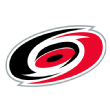
Why they’re here: Carolina is a perennial Stanley Cup contender for good reason. Coach Rod Brind’Amour constantly gets the most out of his roster, and it’s a great one with enviable forward depth (led by Sebastian Aho, Andrei Svechnikov and newcomer Jack Roslovic, having his best season in years) and a booming back end that stays stingy.
Where the Hurricanes constantly face issues is with goaltending (Frederik Andersen is out long term with an injury), although young Pyotr Kochetkov continues to show promise. Carolina is built to win now and so it does, sitting top five in offense (averaging four goals per game), top 10 in defense (giving up fewer than three goals per night) and boasting solid special teams. Even scarier? Carolina has a strong prospect pool — think Alexander Nikishin, Bradly Nadeau and Jackson Blake, who could all make an NHL jump sooner than later. — Shilton
Cause for concern: Fair or unfair, the largest (and only?) concern facing the Hurricanes is if they can win the Stanley Cup. They’ve built a farm system. They’ve acquired draft capital to get as many picks as possible to build that system. They’ve developed a farm-to-table approach that has created a pipeline. They’ve spent money in free agency. They even have what’s thought to be one of the best coaching/GM/ownership setups. But what they don’t have is a Stanley Cup, and that’s the standard through which this iteration of the franchise will be judged. — Clark
Prospect pipeline: The most impactful players in their system are on defense, with Alexander Nikishin expected to be a top-pairing defenseman in the next few years, and the recently signed Scott Morrow projecting to be a solid, second-pair option. Dominik Badinka is another interesting defender who is further away from NHL-readiness but is projected to be a good depth defender.
The Canes have good depth up front, with Bradly Nadeau projected to be a second-line scorer while Jackson Blake and Gleb Trikozov are expected to play top-nine roles. With three prospects at each skating position expected to be impactful to varying degrees, and depth in the form of Felix Unger Sorum, Nikita Artamonov and Jayden Perron, the Canes’ prospect pool remains strong. — Doerrie
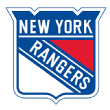
Why they’re here: The Rangers have pushed their chips in to be a contender now — and why not? New York’s roster is bursting with talent, from established stars like Artemi Panarin, Mika Zibanejad and Adam Fox to the continually improving Alexis Lafreniere, Kaapo Kakko, Will Cuylle and (the injured) Filip Chytil. That the Rangers have been able to graduate so many young talents into NHL roles is huge for their present and future success — which is good, since GM Chris Drury has been limited to just nine selections in the past two drafts to prepare New York for years ahead.
Braden Schneider and Zac Jones reached the NHL level to form the Rangers’ third defensive pairing. Brennan Othmann could be back after an audition last season, and Brett Berard had a terrific rookie season in the AHL, too. New York’s balance between being a contender now and having hope for the future is appropriately spot-on. — Shilton
Cause for concern: You might have heard how Igor Shesterkin needs a new contract. So does K’Andre Miller. As does Kaapo Kakko, along with Ryan Lindgren. There’s also a chance you might have heard about it coming at the expense of the Rangers parting ways with captain Jacob Trouba, considering he’ll be entering the final year of a contract worth $8 million annually going into the 2025-26 season.
Corralling all those moving parts while still ensuring the Rangers remain one of the NHL’s front-runners for the Stanley Cup is one of two major challenges facing the club. As for the other? It’s actually winning the Cup after two recent trips to the conference finals. — Clark
Prospect pipeline: The Rangers lack depth, but their top prospects are expected to be difference-makers. Gabe Perreault and Brennan Othmann are both projected to play offensive roles in the middle of the lineup.
Perreault had an incredible season with Boston College in the NCAA and should become a top-six player, with a decent chance to become a top-line scoring winger. He will be a key member of the Rangers’ offensive scheme for years to come. Othmann isn’t quite ready yet after a good first AHL season, and he projects to be a third-line player who plays both special teams.
EJ Emery is the key prospect on the blue line; he comfortably projects as a top-four defender. Other notable prospects include Bryce McConnell-Barker, Adam Edstrom, Adam Sykora, Brett Berard and Victor Mancini, who are expected to have solid seasons in the AHL. — Doerrie

Why they’re here: The Stars earned a Western Conference finals berth in consecutive seasons because of how superb they already are. Even losing forward Joe Pavelski hasn’t changed that. Dallas is deep up front thanks to young superstar talents like Jason Robertson, Roope Hintz and Wyatt Johnson, while Miro Heiskanen remains a standout blueliner for the Stars (and Thomas Harley is coming along, too). Oh, and rookie Logan Stankoven is generating serious Calder Trophy buzz. Add goalie Jake Oettinger‘s consistent play to that mix, and Dallas is on pace to make another long postseason run.
The Stars are dialed in on winning now given how many of their top prospects have already graduated to the NHL, and there aren’t many — beyond Mavrik Bourque, Christian Kyrou and Lian Bichsel — waiting to step in. Right now, at least, Dallas’ roster is all set. And the Stars have the right coach in Peter DeBoer — supported by GM Jim Nill — to keep the club fueled for another run. — Shilton
Cause for concern: Building their team through the draft has allowed the Stars to become a perennial Stanley Cup contender that faces two major questions. Can they win a Stanley Cup, and how will they navigate the salary cap while maintaining their front-runner status? One of the ways the Stars reached their current destination was by maximizing the entry-level contracts of their young players and using those savings elsewhere. But now, Wyatt Johnston is in the final year of his entry-level contract, while Logan Stankoven has two more years at that low rate. — Clark
Prospect pipeline: The Stars have made it their modus operandi to extract value out of late first-rounders and middle-round picks. They lack depth in the prospect pool but have a few players who are expected to play major roles at the NHL level. The fall in the rankings (they were No. 18 in the spring) is directly related to the graduations of Logan Stankoven and Mavrik Bourque.
Lian Bichsel and Emil Hemming are the top names in the pool, and both are expected to play middle-of-the-lineup roles. Defensemen Christian Kyrou and Aram Minnetian have chances to play meaningful games, but they have less confident projections.
Dallas might not have the highest prospect pipeline value, but if there is one team capable of developing future stars, it is the Stars. — Doerrie

Why they’re here: The Wild are off to a sensational start that has been one of the league’s early surprises. Minnesota’s roster has performed above average thanks to MVP-worthy Kirill Kaprizov; consistent scoring from a core including Matt Boldy, Mats Zuccarello and Marco Rossi up front; and Brock Faber continuing to shine on the back end. That Minnesota was able to see its best prospects in Rossi and Faber take hold of NHL opportunities has been key to its current success and should sustain the Wild well into their future.
GM Bill Guerin has been patient with his club while also not shying away from making a change behind the bench — from Dean Evason to Jon Hynes — and there’s help on the way, too. Jesper Wallstedt is heir apparent to Marc-Andre Fleury in net, and Marat Khusnutdinov could have an immediate impact in the league, too. — Shilton
Cause for concern: Can the Wild maximize their potential now that there are fewer stumbling blocks ahead of them? For the past few years, the albatross that was the $14.743 million in buyouts for Zach Parise and Ryan Suter combined hindered what the Wild could do at the trade deadline or in free agency. But those buyouts dropping to just a $1.66 million cap hit in 2025-26 creates the belief the Wild could be on the verge of something. Those savings plus having one of the most consistent farm-to-table setups in the NHL raise questions about whether the Wild can piece everything together to have a long-term winner. — Clark
Prospect pipeline: I’m not quite sure what magic potions director of amateur scouting Judd Brackett and his staff are using to consistently extract value out of the draft, but every year they snag two or three players well past where they should be selected. Zeev Buium and Aron Kiviharju were those two players in 2024, and the Ryder Ritchie selection at No. 45 was a solid one, too. The Wild have signed the highest percentage of their draftees to entry-level contracts since 2020.
Jesper Wallstedt leads the way in this group, as he looks like Minnesota’s goalie of the future after signing his new contract. Up front, the Wild have Danila Yurov, Marat Khusnutdinov, Riley Heidt, Charlie Stramel and Ritchie as projected top-nine players.
Buium is the jewel of the blue line, along with Carson Lambos and Daemon Hunt in the group. The three have confident projections as a top-pair, second-pair and No. 4/5 defenseman, respectively. — Doerrie
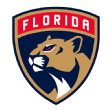
Why they’re here: The reigning Cup champions still possess an elite roster despite unavoidable offseason changes following their victory. That success starts at the top in Florida, with savvy dealings by GM Bill Zito, bang-on coaching from Paul Maurice and a top-tier leadership group helmed by captain Aleksander Barkov and supported by Matthew Tkachuk, San Reinhart, Gustav Forsling and on down the list.
Zito has prepared the Panthers to keep winning with their current lineup for good reason — there’s not much available on Florida’s farm. It’s been three years since the Panthers made a first-round draft selection, and other than Mackie Samoskevich — the club’s 24th pick in 2021 — making his way to the NHL, there’s no one else sticking out with imminent potential to do the same. Florida can stay the course for now, though, and is right on pace to push its way into a possible third consecutive Cup Final this spring. — Shilton
Cause for concern: This is the unquestioned golden age of the Panthers. They’ve won a Cup. They’ve shown they can become a perennial playoff team. They’ve also proved South Florida is an environment where new and venerable players alike can thrive. Many members of their core have more than two years remaining on their current deals, which only adds to the belief the Panthers could add another title.
If there is something that complicates those plans for a second title, it could be a farm system that’s seen Spencer Knight and Anton Lundell as the only prospects drafted since 2015 to remain with the franchise. Eventually, that lack of development will have major negative results at the NHL level. — Clark
Prospect pipeline: The Panthers won the Stanley Cup and therefore, there is a moratorium on their fans complaining about prospects for a couple seasons. Often, the price of winning includes trading away picks and prospects, and that’s the case here too.
Mackie Samoskevich graduates to the big club this season, leaving a big hole in the pipeline. Justin Sourdif and Jack Devine are both projected to be serviceable, bottom-six players, and Gracyn Sawchyn has a less confident projection as a middle-six player. The development of Sandis Vilimanis and Marek Alscher last season present good depth options for Florida if they continue to progress in the AHL this season. — Doerrie

Why they’re here: The Jets have just about everything going for them, for today and tomorrow. Winnipeg’s historic start to the season under first year head coach Scott Arniel is impressive on its own. The team’s core — that’s Kyle Connor, Mark Scheifele, Nikolaj Ehlers and Josh Morrissey, plus Connor Hellebuyck in goal — is performing at an elite levels and powering Winnipeg to surpass its potential. And if GM Kevin Cheveldayoff wants to try adding to the lineup before the trade deadline, there’s plenty of cap space there to leverage.
Cheveldayoff also made the most of a bad situation with Jets prospect Rutger McGroarty by trading the forward to Pittsburgh for Brayden Yager, who should move up to the NHL after another season in the WHL. Winnipeg also has Ville Heinola for the back end and Brad Lambert (the club’s 30th pick in 2022) gunning for an eventual center slot. — Shilton
Cause for concern: Can they get beyond the first round of the playoffs? Jets GM Kevin Cheveldayoff has built a team with a steady flow of homegrown talents, while still retaining the necessary cap space to make a move if and when needed. This blueprint has allowed the Jets to reach the playoffs in six of the past seven years — with the caveat they’ve made it out of the opening round just twice. Also of note: They have significant pending UFAs, including Nikolaj Ehlers, Alex Iafallo and Neal Pionk.. — Clark
Prospect pipeline: The Jets have multiple forward prospects expected to be top-nine impact players. Colby Barlow, Chaz Lucius and Brayden Yager are projected to be middle-six players. Brad Lambert is a high-risk, high-reward player and projects to play in a secondary scoring role. Kevin He has some projectable NHL-caliber tools and is worth monitoring over the next few years.
Two Swedish defensemen, Elias Salomonsson and Alfons Freij, could play in depth roles for the Jets, with Freij having a fair chance at a second-pairing role with good development. — Doerrie

Why they’re here: Detroit hasn’t been a postseason participant since its league-high 25-season run ended in 2016. The Red Wings’ rebuild hasn’t yielded a playoff return in part because of how meticulous GM Steve Yzerman has been with his process, and because of a general lack of consistency from the current roster (particularly on the defensive side). Detroit does have the players, though, to get back there. The team’s core of Dylan Larkin, Lucas Raymond, Moritz Seider and Alex DeBrincat is strong.
What’s most exciting for Detroit, though, might be who is still pending. The Red Wings are stacked with promising prospects, from goaltending (with Sebastian Cossa), to forwards (Amadeus Lombardi, Carter Mazur and Elmer Söderblom) to defensemen (William Wallinder and Axel Sandin-Pellikka). It doesn’t feel like Detroit is far off putting it all together — and luckily for Yzerman there’s some cap space available for more immediate changes that could be made. — Shilton
Cause for concern: The Red Wings had a slow start to the 2024-25 season, with the reality that they remain right in the thick of the wild-card race. The Red Wings have 12 players with more than two years remaining on their contracts, while having a farm system that allows them to gradually incorporate their talent for the future. It leaves them in a hypothetical position to stake their claim in an Eastern Conference landscape that has five or six teams challenging for a wild-card spot.
Whether they’ll actually deliver on all of that well-planned structure remains the unknown. — Clark
Prospect pipeline: Simon Edvinsson and Axel Sandin-Pelikka are both projected to be impactful top-four defenders in the next two years. William Willander and Shai Buium are two other candidates who could be depth defenders at the NHL level. Michael Brandsegg-Nygard and Nate Danielson should become middle-six players, with Marco Kasper making the leap to the NHL lineup.
Both Sebastian Cossa and Trey Augustine are solid options in goal and provide the Red Wings with depth at the position.
Five of the players in the Red Wings pool are projected to be impactful NHL players, and three more are projected to be serviceable NHL depth. There is a lot to like about Detroit’s future with the level of prospects they have at each position. — Doerrie

Why they’re here: Utah inherited its team from Arizona and made alterations from there. Where that takes the Hockey Club in their first season remains to be seen. To date, Utah has been middle of the road just about everywhere, a .500 club that is still establishing an identity in its new digs.
GM Bill Armstrong made one key trade already in grabbing Mikhail Sergachev from Tampa Bay in exchange for top prospect Conor Geekie. Armstrong went on to make 11 picks in last June’s draft, in a class highlighted by top selections Tij Iginla and Cole Beaudoin. Josh Doan — Arizona’s second-round pick in 2021 — is also preparing to step up as a full-time NHLer, and Utah has hope that its overseas prospects will eventually make a positive impact stateside, too. Any one of them could supplement a solid core helmed by Clayton Keller, Sergachev, Barrett Hayton and Matias Maccelli that has the Hockey Club plugging along for now. — Shilton
Cause for concern: Can the Utah Hockey Club become a perennial playoff team now that there are no longer any off-ice distractions? Back when they were the Arizona Coyotes, there was always something happening: Do they have a future in Arizona? Where will they play? Do they have reliable ownership? Coming to Utah has seen a shift in narrative, and with it, a set of expectations that are rather contrasting. The discussion appears to have shifted toward if the UHC can maximize its potential and become a consistent playoff team, and furthermore, can it ensure its honeymoon period in Salt Lake City lasts even longer? — Clark
Prospect pipeline: The pipeline is now headlined by Tij Iginla, Cole Beaudoin and Dmitry Simashev, who are all projected to be impactful NHL players. Julian Lutz and Daniil But are intriguing prospects but lack a confident offensive projection. On defense, Maveric Lamoureux has developed nicely and should fit in a depth role, and Michael Hrabal is projected to be an NHL goalie.
Utah has a stocked prospect cupboard that can be leveraged in trades to make the NHL roster better, and they are not far away from being a real problem in the Western Conference. — Doerrie
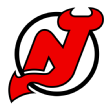
Why they’re here: The Devils failed to make the postseason last season after being league darlings the season before. That triggered a coaching change — from Lindy Ruff to Travis Green and, eventually, Sheldon Keefe — to put New Jersey back on the playoff path.
There’s no doubt the Devils have a roster capable of getting there now. Jesper Bratt, Jack Hughes and Nico Hischier are all averaging a point per game or better this season, and they highlight a strong Devils core — along with risers Luke Hughes and Simon Nemec — that’s taken years coming into its own. There’s hope for New Jersey in the long term as well, with Seamus Casey (just 20 years old) getting an NHL look already this year and 18-year-old defenseman Anton Silayev (New Jersey’s 10th choice in 2024) seasoning in the KHL.
GM Tom Fitzgerald found the Devils a consistent netminder in Jacob Markstrom too, which is making all the difference for New Jersey as it resumes contender status. — Shilton
Cause for concern: Do the Devils have the formula to guarantee they are a long-term playoff team that can contend for the Stanley Cup in the near future? That was the thought during the 2022-23 season when they reached the second round — only to come under question after they missed the playoffs in 2023-24. Since then, they hired a new coach in Sheldon Keefe, and traded for a goalie in Jacob Markstrom who has shown he can provide consistent performances for a team with playoff aspirations. How will those additions, added to a roster that has the majority of its core signed to long-term deals, help the Devils establish their place within the Stanley Cup landscape? — Clark
Prospect pipeline: The Devils continue to draft well, specifically in the early rounds. Seamus Casey started the season with the Devils but headed to the AHL. He is projected to be a No. 4 or No. 5 defenseman as soon as next season.
Anton Silayev, this year’s first-rounder, is a great addition to the pool as a big, rangy defender who can balance out the team’s soft skill on the blue line. Arseni Gritsyuk and Lenni Hameenaho have fair NHL projections as middle-of-the-lineup players.
The Devils are a young team with exciting players, and their fall in the rankings is more a function of graduations of players such as Simon Nemec. They are set up for long-term success at all positions. — Doerrie

Why they’re here: It’s been a difficult few years for the Blue Jackets. The silver lining is they’ve been able to accumulate a number of high draft picks and stock their cupboards for future success. Columbus has made seven first-round picks in the past four drafts — six coming in 12th or higher — and the Blue Jackets have finally seen those faces matriculate at the next level. Adam Fantilli, Cole Sillinger, Kent Johnson, David Jiricek and Yegor Chinakhov are all making their way in the NHL (at various speeds) and that bodes well for Columbus’ brighter future.
GM Don Waddell also has the luxury of flexible cap space to dole out in trades or use to advantage in free agency that will push Columbus further — and perhaps faster — toward getting back into playoff mode. — Shilton
Cause for concern: Will the Don Waddell era prove different from Jarmo Kekäläinen’s reign as GM? Kekäläinen brought talent to Columbus; the team just struggled to take the next step, which is why the Jackets made the postseason only five times in Kekäläinen’s 11 years — with only one second-round appearance. Moving on from Kekäläinen and replacing him with Waddell, who did create a long-term winner in Carolina, is a major step toward their desired destination.
The Blue Jackets once again have one of the NHL’s best farm systems. But that comes with the caveat that the success Waddell had in Carolina isn’t guaranteed in Columbus. — Clark
Prospect pipeline: The Blue Jackets’ prospect pool is loaded with skill and depth. The strength of the prospect pool is on the blue line, with blue-chip prospects in David Jiricek and Denton Mateychuk, who are confidently projected to be top-four defenders. Stanislav Svozil, Charlie Elick, Corson Ceulemans and Samuel Knazko project to be No. 4/5 defenders with reasonable confidence.
Up front, adding Cayden Lindstrom is a big boost. He and Adam Fantilli will be a strong duo down the middle for years to come. They’ve added quite a few skilled forwards to the pool in recent drafts by selecting Gavin Brindley, Jordan Dumais and Luca Del Bel Belluz, who have all developed well and are not far off from contributing in the middle of Columbus’ NHL lineup.
When a prospect pool has three projected stars, four players projected to be impactful and depth behind them, that is a lot of value. — Doerrie
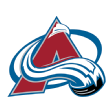
Why they’re here: Colorado is anchored by NHL scoring leader Nathan MacKinnon, powered further up front by a stalwart top-10 scorer in Mikko Rantanen and has the league’s best defenseman in Cale Makar. That’s a jaw-dropping trio for any team to have leading the way — and they are what’s keeping Colorado afloat in a strangely off-kilter start to this season. This is when the Avalanche are meant to shine given the strength of their overall roster — beyond just star power there’s significant forward and defensive depth there, when everyone is healthy — and how stable their coaching from Jared Bednar has been over the years.
Colorado doesn’t have the salary cap wiggle room to make major changes, but it shouldn’t need to. Valeri Nichushkin has returned, and if the Avalanche can get their goaltending figured out — all three of their goalies are below .900 in save percentage this season — they could fly right back up the standings. — Shilton
Cause for concern: Put simply: Balancing the Stanley Cup contender label while having little cap space and few prospects. The chase for a second title since 2022 has been hamstrung with finding a supporting cast on cheap contracts to surround Nathan MacKinnon, Cale Makar and Mikko Rantanen. This forced the Avs’ front office to get veterans at team-friendly terms or to tap into their farm system.
The results have been mixed: Despite much regular-season success, the Avs have been eliminated in the first two rounds since 2022, while having just seven prospects drafted beyond the first round since 2017 play for the club.. — Clark
Prospect pipeline: Calum Ritchie is the lone exciting forward prospect, and he projects to be a middle-six play driver at the NHL level. Ritchie scored a highlight-reel goal in the preseason and has developed into a two-way threat in the middle of the lineup. He’s starting the season with the NHL club but should be sent down barring an extraordinary performance. Sean Behrens and Mikhail Gulyayev are both noteworthy prospects, with Gulyayev projected to be an impact defender.
Two impact players are why Colorado is ahead of a few other teams who have more prospects, as those two are both expected to be cornerstone pieces of the future. Behrens, Oskar Olausson and Jean-Luc Foudy are expected to play NHL games, but their projections are less confident as their development plateaus. — Doerrie
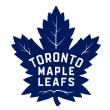
Why they’re here: More than 60% of the Leafs’ cap space is wrapped up in five players. But, Toronto’s core of Auston Matthews, Mitch Marner, William Nylander, John Tavares and Morgan Rielly has helped the Leafs to continual regular-season success (postseason outcomes have been notably less positive). The Leafs’ present roster might be their most complete in recent years. The additions of Chris Tanev and Oliver Ekman-Larsson to the blue line have made for a noticeable upgrade to Toronto’s overall defensive performance, and the Leafs are getting contributions from outstanding young skaters like Matthew Knies.
The Leafs also have Easton Cowan, Fraser Minten and Topi Niemela to look forward to seeing in the future. GM Brad Treliving will be relying on those prospects to make their way up as he ponders how to use limited cap space on a potential Marner extension and continue supporting his core through these prime years of their careers. — Shilton
Cause for concern: Trying to capitalize on their championship-caliber roster is the annual goal for the Leafs. As for how Mitch Marner, John Tavares and their combined $21.9 million cap hit factor into that discussion? That’s a question Treliving and his front office staff will seek to answer in the coming months. Both Marner and Tavares are pending unrestricted free agents.
Their respective futures along with the cap space they occupy are two of the most notable details that are expected to play a role in how the Leafs continue to compete in the coming years. — Clark
Prospect pipeline: Easton Cowan took a leap last season, to the point where quite a few in hockey circles opined he’d be a top-15 pick in a 2023 redraft after going No. 28 in the actual one. The Leafs have needed a player to match up against players like Brad Marchand and the Tkachuks in the Atlantic Division, and while Cowan is unlikely to hit that level, his play style is a rare commodity.
Artur Akhtyamov is a real possibility to be starting in goal for the Leafs in the next few years. Fraser Minten needs another big season to cement himself as a middle-six possibility, but the talent is there. Ben Danford and Topi Niemala are valuable defenders, and while Niemala might not fit under Toronto’s new management, he has value around the league. Nikita Grebyonkin caught the eyes of many in the preseason and is likely to be a depth player for the Leafs in the next year or so.
The Leafs have quality prospects at every position, something they will need if they are to have success given their current salary cap situation. — Doerrie

Why they’re here: The Golden Knights have used every trick in the book to stay ahead of their competition. GM Kelly McCrimmon has been fine trading away picks and prospects to stay in win-now mode. That has left Vegas with a strong NHL roster — headed by Jack Eichel, Mark Stone, William Karlsson and Shea Theodore — to keep the Golden Knights on pace to be playoff contenders again (and again).
The team’s future depends on it. Vegas doesn’t hold another first-round pick until 2027, and it just drafted Trevor Connelly — a prospect with significant concerns but undeniable upside — 19th to put him as its brightest hope (or potential trade asset) on the horizon. Vegas has everything it needs — from McCrimmon to coach Bruce Cassidy to the present lineup — to push for more success now. — Shilton
Cause for concern: What could their supporting cast look like in the years to come? There are two reasons why such a question exists for the Golden Knights. The first reason stems from what happened to them in the first-round exit last season, when 12 of their 16 goals were scored by five players. As for the second, most of the bottom-six forwards along with two of their top-six defensemen will need new contracts — for a team that’s used few prospects from its farm system to fill some of those roles. — Clark
Prospect pipeline: Given how the Golden Knights’ habit of trading their prospects and picks, it is somewhat shocking that this group isn’t ranked last. They traded David Edstrom to San Jose in the Tomas Hertl swap, and drafted Trevor Connelly to replace him in June. Connelly has tremendous talent; if he can mature on and off the ice, he’s got a chance to be a real difference-maker.
Outside of that, forward Brendan Brisson and defenseman Lukas Cormier are the prospects with the best chances to become middle-of-the-lineup players at their respective positions. Matyas Sapovaliv projects as a middle-six winger with modest confidence, but is most likely a third-line player in the NHL. Carl Lindbom is a noteworthy goaltending prospect, but there is not a lot in the nets in the Vegas pipeline.
Keeping with the organization’s modus operandi, there’s a greater chance most of these guys are traded than play 200 games in Vegas. — Doerrie

Why they’re here: The Oilers enter every season laden with high expectations because of their current core — that’s Connor McDavid, Leon Draisaitl, Zach Hyman, Evan Bouchard and others — who make Edmonton a dynamic contender to win right now. That’s a good thing, given their prospect situation. Edmonton did grab Matthew Savoie in an offseason trade with Buffalo to bolster that group, but losing Dylan Holloway and Philip Broberg to St. Louis on offer sheets stings. Vasily Podkolzin — a 23-year-old winger Edmonton acquired after losing the latter two skaters — hasn’t been lighting up the scoresheet, but Roby Järventie (an AHL standout) may have call-up potential.
Really though, Edmonton has enough in its lineup to be a top-tier contender — when they get a full-team contribution (and don’t entirely rely on those stars to carry the team). — Shilton
Cause for concern: Do they have enough around Leon Draisaitl and Connor McDavid to win a Stanley Cup before time runs out? They’re coming off what was the most successful season of the Draisaitl-McDavid era, having just fallen a victory short of winning a Stanley Cup.
But they now face the prospect of trying to replicate that while also navigating even more financial challenges. The Oilers have 14 players who are older than 30, while their homegrown candidate pool took a hit when they didn’t have the cap space to retain Philip Broberg and Dylan Holloway, who signed offer sheets with the Blues. — Clark
Prospect pipeline: The acquisition of Matthew Savoie and Roby Jarventie through trade and Sam O’Reilly in the draft added quality up front. Those three are young players who will need to step up on Connor McDavid and Leon Draisaitl’s wings.
After Edmonton lost Philip Broberg to an offer sheet, Beau Akey is the player in the Oilers’ pipeline with the best chance to play a top-four role in the NHL. There’s more here than in previous seasons, and the Oilers are hoping their current superstars can elevate the play of those prospects as they filter into the lineup. — Doerrie

Why they’re here: If Buffalo had a slogan it would include the word “process.” GM Kevyn Adams talks about that ad nauseam. The Sabres are nursing a historically bad postseason drought (13 seasons and counting since they made the playoffs, and 17 seasons since winning a series) and Buffalo doesn’t appear any closer to snapping that skid despite a coaching change (back to Lindy Ruff) and high hopes for upstart goaltender Devon Levi (who’s struggled this season, to say the least).
What Buffalo does have is cap space available to make trades, and some solid prospects. Jiri Kulich has seen some NHL playing time, and Isak Rosen is performing well in the AHL, too. But it’s the Sabres’ core that has to propel the team forward. Getting consistency from everyone — Tage Thompson, Jack Quinn, Owen Power, Dylan Cozens, Zach Benson, JJ Peterka, etc. — is what’s going to move the needle, and define Buffalo’s future. — Shilton
Cause for concern: Four different general managers and eight different head coach changes. That’s how much turnover the Sabres have gone through since they last made the playoffs in 2011. In that time, they’ve made several top-10 picks, while drafting 15 first-round picks total from 2013 through 2022. Building through the draft while acquiring additional young talent has created a roster that appears ready to capitalize on its promise.
Is it possible that the Sabres now have the coaching staff and the front office that turns that promise into tenable results? — Clark
Prospect pipeline: The Sabres use a distinct blend of analytical tools and scouting to approach the draft, and very clearly, approach every pick with the “best player available” mantra. As a result, they have a well-rounded pool that includes Devon Levi in goal, Maxim Strbak and Gavin McCarthy on defense, and a litany of high-value forwards in Jiri Kulich, Noah Ostlund and Konsta Helenius.
Trading Matthew Savoie to Edmonton drops them a tick, as does the graduation of Zach Benson. They have projectible NHL players at every position, four potential impact players and good depth to complement the talent on their NHL roster. Buffalo is set up for long-term success but needs to start translating the value into wins at the NHL level. — Doerrie

Why they’re here: The Predators went all-in this offseason acquiring Steven Stamkos, Jonathan Marchessault and Brady Skjei in an effort to put them over the top in an ultra-competitive Central Division. Nashville has instead been one of the league’s worst teams, with an underperforming roster (save perhaps for Filip Forsberg and Roman Josi) that GM Barry Trotz openly admits he’s willing to rebuild if his club “doesn’t get it going.”
What does that mean for Nashville’s future? Well, they have several long-term, expensive contracts on the books, giving Trotz little space to wield in a re-tooling effort. The Predators have decent prospects on the way — including Joakim Kemell and Zach L’Heureux — but will Trotz really want to waste the remaining good years Stamkos, Ryan O’Reilly and other veterans have to offer? — Shilton
Cause for concern: Was their free-agent spending spree too much too fast? Even before their slow start, some form of that question shadowed the Predators. They went from being a team that gradually retooled their roster into one that forced its way into the discussion about their place in the Stanley Cup landscape.
It’s possible those early questions could be wiped away with success later in the season. But what won’t go away is the need to win now given the Predators have 10 players on their active roster that are older than 30. — Clark
Prospect pipeline: The Predators skyrocketed up prospect rankings lists when Barry Trotz stated his team would draft players with star potential — and followed that up by taking Matthew Wood and Tanner Molendyk in 2023. However, the trade of Yaroslav Askarov, who is arguably the best goaltending prospect in the game, is a big loss to the pool value.
Outside of Wood and Molendyk, who have solid NHL projections toward the top of the lineup, the Preds have good depth. Adding Egor Surin and Teddy Stiga to Fedor Svechkov, Zachary L’Heureux and Joakim Kemell gives the Predators more than a few darts at the board when it comes to the middle of their lineup. Losing Askarov is a calculated risk, but the Preds are well set up to score goals for quite some time. — Doerrie
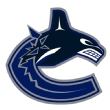
Why they’re here: The Canucks’ were a powerhouse last season who haven’t quite shown the same promise to start this season. But that’s not to say Vancouver doesn’t have the ability to rise. Quinn Hughes leads a team stocked with veteran talents including J.T. Miller, Brock Boeser, Elias Pettersson and free agent signing Jake DeBrusk.
An injury to Boeser and struggles for Pettersson have undoubtedly impacted the Canucks and their win-now mindset, but there’s plenty of season left. And fortunately GM Patrik Allvin is seeing improvements in the Canucks’ farm system. Jonathan Lekkerimäki had a terrific season in the SHL (grabbing Rookie of the Year honors) and both Aatu Räty and Arshdeep Bains are ready to reach the NHL ranks in full-time spots. How they make that transition could determine the way Allvin wields Vancouver’s cap space to move the needle further on their future. — Shilton
Cause for concern: What does their long-term place within the Western Conference hierarchy look like? Last season suggested the Canucks were ready to join the Avs, Golden Knights, Oilers and Stars in the conference power clubhouse. But those four teams have earned that status over time — and that appears to be the biggest question facing the Canucks.
Then there are the questions about what a new Brock Boeser contract would look like for a franchise that already has eight players with more than three years remaining on their current deals. — Clark
Prospect pipeline: Tom Willander and Jonathan Lekkerimaki are the prized prospects of the pool, with Lekkerimaki representing the best shot for a true impact player in the top six. Willander didn’t have the season the Canucks had hoped for in 2023-24, but he is comfortably projected to become a reliable second-pairing option and should take a major step forward this season. Both players carry tremendous value at their respective positions, and are more likely to be impact players than not.
Elias Pettersson (the defenseman) and Kirill Kudryavtsev have fair shots to be depth defenders, providing good value for the selections. — Doerrie

Why they’re here: It’s been seven years since Anaheim last made an appearance in the postseason. In the interim, the club’s focus is on building towards a brighter future — and they actually have one.
Anaheim is stocked with intriguing prospects, including Olen Zellweger (a standout with the AHL’s San Diego Gulls), Cutter Gauthier (the fifth overall pick in 2022) and Beckett Sennecke (selected third overall in 2024). The Ducks also boast an impressive rookie goaltender in Lukas Dostal to go along with a young core that includes Leo Carlsson, Mason McTavish, Pavel Mintyukov and Trevor Zegras. If and when GM Pat Verbeek wants to continue making upgrades, there will be ample cap space available, too. Anaheim is in prime position to be a contender down the road. — Shilton
Cause for concern: Rebuilds can go in one of two directions. Either all the moving parts work in alignment that manifests long-term success. Or there’s a systematic disconnect that begins to eat away at what was once thought to be a strong future. So often the difference between those two paths can come down to what’s done by the coaching staff, front office and ownership. Given the young talent on the roster and in the system, the Ducks are now at that crossroads. Which path will they tread into the future? — Clark
Prospect pipeline: The Ducks have been a top drafting team for over a decade, so there is no surprise they now have a top-5 prospect pool. The Ducks have prospects at every position that are high-end, with 2024 No. 3 pick Beckett Sennecke headlining the pipeline. With Sennecke and Olen Zellweger adding to a young NHL core that includes Leo Carlsson, Mason McTavish, Cutter Gauthier, Pavel Mintyukov and Lukas Dostal, the Ducks are primed for years of success.
On the back end, Stian Solberg joins Tristan Luneau, Tyson Hinds and Noah Warren as defenders who are projected to fit in bottom-two pairings. Nathan Gaucher and Sasha Pastujov could be good depth pieces up front, with Calle Clang and Tomas Suchanek as reasonable depth options in goal.
The value of the Ducks’ pool is on defense, with five players expected to make the NHL in varying roles. — Doerrie

Why they’re here: The Kraken are not Vegas 2.0. Seattle’s expansion into the NHL has been a slower burn under GM Ron Francis as he’s attempted to set the Kraken up for sustainable, long-term success.
In the short term, that means making one coaching change (to Dan Bylsma) and primarily sticking with a core that’s had one memorable playoff run in three seasons. Right now Seattle is, again, an average club eyeing steady improvements into the future. The Kraken’s first draft selections — Calder Trophy winner Matty Beniers and Ryker Evans — have already landed NHL roles, and there is more young talent poised to do the same. Berkley Catton — taken 17th overall in 2024 — dominated the WHL in 2023-24 with a 116-point season, and Carson Rehkopf and Lukas Dragicevic have had similar success at the junior level. When Seattle can bring them up to speed in the NHL it’ll shape the next chapter for the Kraken as a potential yearly contender. — Shilton
Cause for concern: They’ve been a lottery team. They’ve been a playoff team that was a win away from the Western Conference finals. They’ve also been a team that missed the playoffs because of inconsistency. In that time, Kraken GM Ron Francis has overseen the construction of one of the NHL’s stronger farm systems. Francis has also spent quite a bit in free agency in an attempt to supplement the roster. Yet the Kraken still face the same questions: When will everything align? And if it does, will it lead to them establishing an identity? — Clark
Prospect pipeline: The Kraken have quite a few interesting prospects that are expected to be impactful at the NHL level, led by Berkly Catton, a skilled center who piles up points. Beyond Catton, the Kraken have Eduard Sale, Jagger Firkus, Carson Rehkopf, David Goyette and Jani Nyman, all of whom have fair NHL projections in middle-six roles.
The back end is loaded with prospects, with Ryker Evans, Lukas Dragicevic and Caden Price projected to play consistently in the NHL. Niklas Kokko is a good prospect in goal with a reasonable NHL projection.
The Kraken have built themselves quite the prospect pipeline, with lots of players who should make an impact in the NHL in the next two to three seasons. — Doerrie

Why they’re here: The Blackhawks’ rebuild was immediately expedited by drafting Connor Bedard first overall in 2023, but one player alone won’t change all Chicago’s fortunes. Fortunately, there are prospects on the way to help Chicago re-load in seasons ahead. Beyond Bedard, the Blackhawks have Alex Vlasic and Lukas Reichel in their NHL ranks now, with Frank Nazar and Kevin Korchinski looking to come back into the mix.
And there’s a strong pipeline from there, with more possibilities for GM Kyle Davidson to continue developing or trade. Chicago’s cap space is enviable as well, and should be a tool for Davidson to use in making the Blackhawks better in time — and soon, given they won’t want to waste any of Bedard’s prime on being less than contenders. — Shilton
Cause for concern: Other than the fact that quite a few people in Chicagoland can’t watch the Blackhawks on local TV? In terms of the on-ice component, it’s a matter of seeing how the front office continues to build around Connor Bedard. The excitement that comes with having a generational talent also comes with a countdown for when that generational talent goes from being the future to being a present for a fan base. The Blackhawks are no different, and what they do now could either help Bedard & Co. win — or force them to pay later should any mistakes arise. — Clark
Prospect pipeline: It’s usually helpful when you have back-to-back high lottery picks, and that description fits Chicago. Artyom Levshunov — the No. 2 pick this summer — has all the makings of a top-pairing defender, joining Kevin Korchinski as another impact defender in the pipeline. Oliver Moore and Frank Nazar are head and shoulders above the other forward prospects, with both projected to be top-six offensive contributors.
Beyond Levshunov and Korchinski on the blue line, Sam Rinzel and Nolan Allan are projected to become depth NHL players. Chicago’s prospect pool gets a boost in goal with Adam Gajan and Drew Commesso, who have a fair chance of becoming NHL goaltenders.
They have potential impact players at every position in the pipeline, with good depth when Sacha Boisvert, Marek Vanacker, Ryder Rolston, AJ Spellacy, Ethan Del Mastro and Wyatt Kaiser are considered. — Doerrie

Why they’re here: The Capitals were a surprise addition to the playoff field last season. They won’t be this season. Washington is off to a hot start powered by Dylan Strome, Alexander Ovechkin and John Carlson, and the new addition of goaltender Logan Thompson (by equally new GM Chris Patrick) has been a bona fide game-changer.
That’s given Washington more juice in the short term than maybe they expected. Second-year head coach Spencer Carbery has found his rhythm, and passed it onto the current roster to help them thrive in unexpected ways. That all bodes well for today. Looking ahead to tomorrow and it’s all about Ryan Leonard — Washington’s eighth overall pick in 20023 who is dominating at Boston College — who is poised to join Connor McMichael, Alexei Protas and Hendrix Lapierre as the next wave. — Shilton
Cause for concern: Perhaps the place to start with the Capitals is that they’re slated to have more than $25 million available entering free agency next season. Nearly $15 million of that will come from getting Nicklas Backstrom and T.J. Oshie‘s contracts off the books.
Still, it leaves the Caps needing to make some decisions about players such as pending UFAs Jakob Chychrun and Andrew Mangiapane, while figuring out what to do in net as both Charlie Lindgren and Logan Thompson are also set to hit the open market — and need significant raises from their current cap hits. — Clark
Prospect pipeline: The Caps’ pipeline lacks depth but has a few gems. Ryan Leonard is one of the best prospects outside of the NHL and projects to be a long-term player in the top six who impacts the game at both ends of the ice. He’s not Tom Wilson 2.0, but he certainly fits the mold of a skilled player who drives opponents nuts.
Ivan Miroshnichenko and Hendrix Lapierre have shown they can make an impact at the NHL level, and both come out of the pipeline given their expected NHL roles this season. Andrew Cristall is a high-risk, high-reward player whose projection is less confident, but his ceiling is as a top-six playmaker. The recent addition of Terik Parascak gives the Caps another skilled forward with top-six potential. Jake Karabela has tools to become a bottom-six NHL player if he continues to develop at the current pace.
The Caps have two defensemen projected to play consistently at the NHL in Ryan Chesley and Vincent Iorio, but they lack a true blue-chip defender in the pipeline. — Doerrie
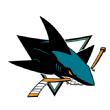
Why they’re here: The Sharks are excelling at their rebuild. San Jose’s roster now — admittedly short on top-end skaters — is (mostly) place-holding for all the talent still on its way. The Sharks selected Macklin Celebrini first overall in June, and he’s burst his way into the NHL immediately, to complement San Jose’s other highly prized prospect Will Smith.
GM Mike Grier — with a wealth of cap space — also grabbed elite goaltending prospect Yaroslav Askarov in a trade with Nashville. Plus, there a handful of skaters in the AHL — think Thomas Bordeleau, Shakir Mukhamadullin and Filip Bystedt — who are seasoning nicely with an eye towards filling spots for San Jose in the near future. — Shilton
Cause for concern: Finishing with the NHL’s worst record last season means there’s a need to find an upward trajectory, which can be more challenging than outsiders might assume. That’s why the decision to hire a first-time NHL head coach in Ryan Warsofsky was so crucial. He’d spent the last two seasons with the Sharks as an assistant, but had won in the ECHL and AHL before making the jump to the NHL.
Winning while developing was an obstacle Warsofsky navigated in the ECHL and AHL. It’s something the Sharks believe he can replicate as their rebuild now features Macklin Celebrini and Will Smith. — Clark
Prospect pipeline: The Sharks’ prospect pool got a big boost with the drafting of defenseman Sam Dickinson and acquisition of goaltender Yaroslav Askarov. Add Quentin Musty and Mattias Havelid to the group and the Sharks have plenty of talent with which to surround Macklin Celebrini and Will Smith. Every player mentioned has the potential to be a difference maker at the NHL level.
Outside of that, the value of the pool is buoyed by the presence of Luca Cagnoni on the back end, and several potential middle-six players in Filip Bystedt, Daniil Gushchin and Thomas Bordeleau. The strength of the Sharks’ prospect pool is in the forwards, but the addition of Askarov and Dickinson will make the Sharks a formidable opponent in the next few years. — Doerrie
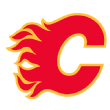
Why they’re here: The Flames’ 5-0-1 start to this season was unexpected — and proved unsustainable. Calgary has regressed since to sit as the middle-of-the-pack team they projected to be. What the Flames do have is an excellent goaltending duo headlined by rising star Dustin Wolf — a serious Calder Trophy candidate — and significant cap space to use in the next few years.
Whatever those additions might be will complement a fascinating group of prospects highlighted by Zayne Parekh, Matvei Griden, and Andrew Basha. There’s also Connor Zary, already playing at the NHL level and showing potential even to take over a center job. GM Craig Conroy has enough players in the pipeline to be optimistic about Calgary’s chances in the years to come. — Shilton
Cause for concern: Stability has been an issue in Calgary the last few years. And while there appears to be more stability this season, there are questions about what path the Flames take in order to challenge for a playoff spot both now and in the future. They’ve been in a retool following a mass exodus from their most recent rebuild. But their average first-round draft position since 2019 has been 19th — and they missed the playoffs in three of those seasons. How do the Flames get back to being a perennial postseason contender? — Clark
Prospect pipeline: Zayne Parekh leads the way and buoys the Flames’ prospect pool value in a significant way. He’s projected to be a top-pairing offensive dynamo in the NHL.
Samuel Honzek, Andrew Basha and Matvei Gridin all have fairly confident second-line projections. Luke Misa and Aydar Suniev have top-nine NHL projections with variance.
Outside of Parekh, the blue line has a few notable prospects in Hunter Brzustewicz, Henry Mews and Jeremie Poirier all having NHL potential. Brzustewicz and Poirier have the strongest NHL projections, as both are projected to play No. 4 or No. 5 roles at the NHL level with continued development. — Doerrie

Why they’re here: The Lightning refuse to let their contention window close. All credit to GM Julien BriseBois for staying aggressive on that front. BriseBois is willing to make tough decisions — like signing Jake Guentzel over former Tampa Bay captain Steven Stamkos — if it means sustaining the Lightning’s long run of success for another season.
It’s working so far, with the Lightning a top-10 offensive team again, with a solid back end (anchored by Victor Hedman) and goaltending (from Andrei Vasilevskiy). That’s good, because their win-now approach has mortgaged much of the club’s future. BriseBois has made just two first-round selections since 2018, and the only reason they have an elite prospect in Conor Geekie is that BriseBois traded Mikhail Sergachev to Utah for him. For a cap-strapped team like Tampa Bay it’s all about leveraging their current roster, and seeing how long they can run it back. — Shilton
Cause for concern: Winning two Stanley Cups comes with a cost — and the Lightning’s current situation is emblematic of that reality. Having nine players with more than three years remaining on their contracts provides stability. But it also means the Lightning have one of the tightest cap dynamics in the NHL.
That’s another reason why they’ve gone through what’s become an annual parting with players who helped them win those titles. And the farm system that once gave them a near endless supply of homegrown talent is also facing its own challenges. — Clark
Prospect pipeline: The Lightning haven’t drafted much in the past five seasons, and it shows. The acquisition of Conor Geekie in the offseason via the Mikhail Sergachev trade gives Tampa Bay a prospect expected to play a middle-six scoring role in the NHL. Meanwhile, Isaac Howard and Ethan Gauthier are expected to become NHL regulars, with Howard expected to fit in a secondary scoring role.
If Gabriel Szturc and Dylan Duke can continue to develop with Syracuse, they could be reliable bottom-six options in the future. — Doerrie
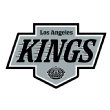
Why they’re here: The Kings have fallen into that mid-range category in recent years after a stunning run of success that earned them a pair of Cup titles in 2012 and 2014. What hasn’t changed is how much L.A. relies on it’s heavyweights — Anze Kopitar, Adrian Kempe, Kevin Fiala and Drew Doughty — to keep them on track. And that’s after the Pierre-Luc Dubois experiment crashed and burned in a single season.
The Kings made a coaching change last season from Todd McLellan to Jim Hiller in an effort to gain traction now and they’re working on that. The Kings were able to graduate their top prospect Brandt Clarke to the NHL, but there’s more expected out of Quinton Byfield than what he’s shown in a slow start. And goaltender Erik Portillo — a rising figure in the AHL — should provide competition at that position sooner than later. — Shilton
Cause for concern: This iteration of the Kings has become a cautionary tale. It wasn’t that long ago when GM Rob Blake was able to retain franchise icons Drew Doughty and Anze Kopitar, while building a farm system that was one of the NHL’s most promising at its peak. From there, the Kings supplemented their roster by making the sort of free agent signings and trades that created intrigue.
While they’ve been a consistent playoff team, they’ve yet to advance past the first round, and that once-vaunted prospect cupboard now looks a bit bare. — Clark
Prospect pipeline: The Kings’ pipeline has taken a bit of a hit because of the graduations of Alex Laferriere, Alex Turcotte and Brandt Clarke.
Liam Greentree is a good addition to the prospect pool, and represents Los Angeles’ best chance at an impact player. The Kings have projectable depth players in Koehn Zimmer, Francesco Pinelli, Kenny Connors and Samuel Helenius. Zimmer is the best of that bunch and should fill a third-line role in the next few years.
But for the first time in recent memory, the Kings lack a true top-tier prospect and will need to rely on developing the current stable to fill the lineup. — Doerrie
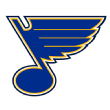
Why they’re here: The Blues are an interesting case study. Their current lineup includes terrific talents like Jordan Kyrou, Robert Thomas, Pavel Buchnevich and Colton Parayko, and GM Doug Armstrong has made efforts to improve St. Louis now even further by acquiring Dylan Holloway and Philip Broberg on offer sheets from Edmonton. Yet the Blues are a below-average team struggling to score and with abysmal special teams.
Based on Armstrong’s aggressive move with the Oilers it doesn’t seem like St. Louis is interested in a re-tooling process, perhaps based on the lack of cap space available to make significant alterations right now. That could have the Blues facing a third straight season outside the playoff picture. Their farm system does have a few names worth mentioning, including Zachary Bolduc, Zac Dean and Tanner Dickinson. And Jimmy Snuggerud — the Blues’ first-round pick in 2022 now at the University of Minnesota — could be next to break the NHL barrier. — Shilton
Cause for concern: Teams faced with tight cap constraints are typically either in the midst of — or about to exit — a championship window. The Blues are not in either of those situations. They’ve missed the playoffs for two straight campaigns. Missing for a third consecutive season would tie the longest drought in franchise history.
They have eight players with more than three years left on their contracts, while nine have some variation of a no-trade clause. Consistently making the playoffs could play a role in somewhat softening their cap reality in the coming years, while missing the playoffs again further amplifies those concerns. — Clark
Prospect pipeline: The Blues are loaded with NHL forward talent, and drafted Adam Jiricek this summer, a player with incredible potential on the blue line.
Dalibor Dvorsky, Jimmy Snuggerud, Zach Dean and Zachary Bolduc are all expected to contribute offensively at the NHL level. The combination of those four players brings a blend on scoring, dynamic transition play, playmaking and forechecking. Add Otto Stenberg, a two-way player who controls the pace of game, and Adam Jecho, a player with skill and size, and the Blues have six players projected to be impactful in top-nine roles.
The Blues lack that level of talent on the blue line aside from Jiricek, with Theo Lindstein representing the best chance at developing into a middle-pairing defenseman. The value is clearly with the forward group, one that could be really good for years to come. — Doerrie

Why they’re here: The Canadiens own one of the league’s premier prospect pools. That’s what Montreal will be pulling from as it continues working through a lagging rebuild. While Nick Suzuki, Cole Caufield, Juraj Slafkovský and Kaiden Guhle (among others) are providing what energy they can to the lineup now, Montreal will take larger steps ahead in the future if their other talents keep developing. Lane Hutson — Montreal’s second-round pick in 2022 — has been an NHL regular this season, and Joshua Roy (averaging a point per game in the AHL) could be right behind him.
Ivan Demidov and David Reinbacher — Montreal’s most recent first-round choices — will also make their way into the mix eventually. That’s exciting for what’s to come in Montreal. And so is the eventual return of a healthy Patrik Laine, who could be the mid-season boost these Canadiens need to power through another down campaign. — Shilton
Cause for concern: Striking a balance between gradual progress and letting prospects develop has been the Canadiens’ plan the last few years. Yet what appears to be one of the major challenges facing Habs GM Kent Hughes is how the franchise will make the successful transition from what they are now into what they hope to become.
Getting to that final destination could require deft asset management; the Canadiens have a chance to offload cap space in 2024-25 knowing they must make some significant investments in their young talent in the years ahead. — Clark
Prospect pipeline: Montreal passed on Matvei Michkov in the 2023 draft, but it wasn’t going to pass on Ivan Demidov. Adding Demidov to a pipeline that has Lane Hutson and David Reinbacher on the blue line is tidy work. Demidov is projected to be a star at the NHL level, and will be a key piece of Montreal’s scoring.
Hutson looks as if he’s going to be a difference maker offensively at even strength and running the power play. Reinbacher’s development is a concern given his injuries, but he has the talent to become a solid top-four defender.
Michael Hage is off to a good start with Michigan, and has a good chance to be a middle-six offensive contributor. Filip Mesar, Owen Beck and Joshua Roy all project as reliable bottom-six contributors. Jacob Fowler’s development has been outstanding and while goaltenders are harder to project, he could be Montreal’s goalie of the future if he continues on his current trajectory. — Doerrie
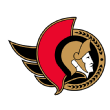
Why they’re here: The Senators have pushed to be a playoff team again since last making a postseason run in 2016-17. That seven-year drought has yet to be punctuated despite Ottawa wielding an impressive core of Tim Stutzle, Brady Tkachuk, Drake Batherson and Josh Norris. The offseason addition of Linus Ullmark in net has helped, and Ottawa is off to a better start.
They have to hope those skaters — among others — keep tracking upwards, because there are few prospects prepared to take NHL slots at the moment. Carter Yakemchuk — the seventh overall pick in 2024 — could be in their top four down the road, and Xavier Bourgault may matriculate sooner to add offensively. And there’s Mads Søgaard holding up the Senators potential future in net. For now the Senators are still finding their footing and how well they do could determine what GM Steve Staios does with limited cap space at the deadline and into the coming summer. — Shilton
Cause for concern: Can all the changes made within the last year help the Senators figure out their place in the Eastern Conference landscape? They got a new owner in Michael Andlauer who then promoted a new GM in Steve Staios who eventually hired a new coach in Travis Green. Having that many sweeping organizational changes has led to several questions being asked of the Senators. Perhaps the most notable: Can this lead to the Sens eventually returning to the playoffs for the first time since 2016-17? Or is more work needed? — Clark
Prospect pipeline: Carter Yakemchuk is far and away the best prospect in the pool; he’s the only prospect expected to be a true difference-maker in this pipeline. Outside of Yakemchuk, who looks like a blue-chip defender, Zack Ostapchuk projects to be a reliable bottom-six player. Tyler Boucher continues to be perplexing and is likely to top out in a bottom-six role as a physical, forechecking presence.
Tomas Hamara and Xavier Bourgault have NHL projections as depth players, and could improve their stock with continued development in Belleville this season. — Doerrie

Why they’re here: The Flyers’ future arrived in a significant way with Matvei Michkov — the seventh overall pick in 2023 — making landfall in the NHL this season. He’s already the club’s second-leading scorer, which says plenty about the state of Philadelphia’s current roster.
The Flyers’ are 29th in goals against, 21st in scoring and their goaltending is woefully inconsistent despite high expectations for the now-injured Samuel Ersson this season. Coach John Tortorella has been his usual explosive self trying to guide Philadelphia away from the standings basement, even making Michkov a healthy scratch to send a message. But Michkov is key to the Flyers’ future, as is its core of prospects-turned-players like Bobby Brink, Tyson Foerster and Cam York complement Owen Tippett, Morgan Frost and others. There are promising names for back-end support in Emil Andrae and Ronnie Attard. That’s something for the Flyers’ to cling on for the future. — Shilton
Cause for concern: Roster flexibility, or a lack thereof, appears to be the biggest challenge facing the Flyers in the future. They have eight players who are under contract for more than two years, with half of them having deals longer than four. It’s what makes the need for players such as captain Sean Couturier, Travis Konecny, Travis Sanheim and Owen Tippett to have strong seasons even more vital.
They must also find success with players on their ELCs to help ease their cap limitations. The Flyers have $11.446 million in dead cap space, though that figure decreases to $5.329 million ahead of next season. — Clark
Prospect pipeline: Jett Luchanko — who began the season with Philly — is back with his junior club. Oliver Bonk and Emil Andrae represent a bright future on the Flyers’ blue line. The Flyers have three potential middle-six players in Denver Barkey, Elliot Desnoyers and Massimo Rizzo, with all three projected to contribute in the next two or three years. In goal, the Flyers have two intriguing prospects in Alexei Kolosov and Carson Bjarnason.
The Flyers have quite a bit of talent in the pipeline at each position, with much of the attributed value at the goaltending position. — Doerrie

Why they’re here: The Islanders continually run it back with a similar roster while angling for different (i.e. better) results. GM Lou Lamoriello has been in place since 2018 and made four coaching changes in that span — right up to current bench boss Patrick Roy — but what remains the same is New York’s scoring troubles without enough high-powered forwards.
There’s some hope on the horizon given the strong start Cole Eiserman — New York’s 20th overall pick in 2024 — is having at Boston University, and William Dufour is a power forward in the system on his way up. Samuel Bolduc also has a chance of taking an NHL slot soon, while New York’s defense already has a vital rising star in Noah Dobson going. In the present, these Islanders are relying on the same combination of Kyle Palmieri, Anders Lee, Bo Horvat and Brock Nelson to win the day — and that’ll be their story, it seems, until the next wave of skaters are ready. — Shilton
Cause for concern: They have a roster with 11 players who are older than 30. They have a farm system that was hindered by not having a first-round pick for four straight years, while only four of their draft picks since 2016 have become full-time NHL players that have played in more than 140 NHL games.
As of now, the Islanders are a team that will push for a playoff spot. They’ve done it in five of the last six seasons. But with an aging roster and a farm system that’s struggled to replenish their roster? It does raise questions about the Isles’ long-term aspirations. — Clark
Prospect pipeline: The Islanders’ prospect pipeline lacked an impact player until Cole Eiserman fell into their laps at the draft in June. He is projected to be a true scoring threat in the NHL, something this system has lacked for years.
Jesse Pulkkinen was a solid selection at No. 54, and projects to be a top-four, all-situations defender. Calle Odelius and Danny Nelson project to be reliable middle-of-the-lineup players who should fit well in Patrick Roy’s offensive system. William Dufour, Matthew Maggio and Alex Jefferies are potential depth options, but are likely to be bubble players.
The Islanders’ prospect pool improved with the additions of Eiserman and Pulkkinen, and they will need both to play meaningful roles in the near future. — Doerrie

Why they’re here: The Bruins’ roster is starting to look (and possibly feel) its age, with a mediocre .500 start to this season and a head-scratching minus-16 goal differential (third worst in the Eastern Conference). It was inevitable that Boston would eventually experience a downturn while the next wave of Bruins gets settled into NHL roles — and Boston does have some young talent to sustain them in years ahead.
Morgan Geekie — currently skating on the Bruins’ top line — is finding his way, along with Trent Frederic and John Beecher. In the wings are Fabian Lysell and Matthew Poitras (both now in the AHL). But Boston’s core — headlined by Brad Marchand, David Pastrnak and Charlie McAvoy — needs reinforcements now. Their lack of available cap space makes that tough to do, so improvements are required from within. — Shilton
Cause for concern: Could the years of trying to win in the present eventually catch up to the Bruins? Since drafting superstar right winger David Pastrnak in 2014, the Bruins have had a mixed history with first-round picks. They’ve held onto homegrown talents such as Charlie McAvoy, John Beecher and Fabian Lysell. But they’ve either traded first-round picks (2018, 2020, 2022 and 2023) or watched some of those players leave.
That’s been further compounded by the fact that since 2018 the Bruins have had just three players they drafted after the first round reach the NHL. — Clark
Prospect pipeline: The Bruins find themselves at the bottom of the pipeline rankings, specifically after Matthew Poitras and Mason Lohrei graduated last season. The Bruins were able to add Dean Letourneau in the draft, and he joins Fabian Lysell as the only two forwards projected to play in more than 200 games in a meaningful capacity.
Outside of that, the Bruins lack prospects who are expected to reach the 200-game threshold in the NHL, a consequence of sustained success over the past two decades. — Doerrie
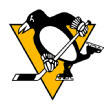
Why they’re here: The Penguins aren’t what they once were — and that’s an understatement. Sidney Crosby, Evgeni Malkin and Kris Letang remain, but Pittsburgh is a shadow of the Cup contender they used to be with that trio leading the charge. GM Kyle Dubas came in spouting a strong belief in those same players to see the Penguins through more successful seasons and it’s not happening — Pittsburgh has missed the postseason in consecutive years (a first in the Crosby era); based on their start, it’ll be three straight this spring.
The worse news for Dubas is the club’s limited cap space and dwindling prospect pool. Dubas attempted to fix that issue by acquiring Rutger McGroarty from Winnipeg, but he quickly slid back to the AHL after a brief NHL stint. Samuel Poulin — Pittsburgh’s 21st overall pick in 2019 — has found his way into a role, while others — including 2022 21st overall pick Owen Pickering — are further off. Dubas has his work cut out to revamp these Penguins, and whether coach Mike Sullivan is part of that process is only one of many questions still to be answered. — Shilton
Cause for concern: What was initially intended to be just a one-year playoff hiatus for Sidney Crosby, Evgeni Malkin and Kris Letang soon turned into a two-year postseason absence. Now there’s a possibility the Penguins could miss the playoffs for a third straight season given their slow start.
Regardless of what happens this season, the Penguins still face questions about how to best prolong their window with Crosby, Malkin and Letang, while managing what their future could look like without them. What makes it even more complicated is that they’ve held on to their first-round pick just four times since 2013, and the majority of the players they’ve drafted since 2014 are playing elsewhere. — Clark
Prospect pipeline: The Penguins haven’t had a strong prospect pool in two decades, probably because they’ve won a few Stanley Cups and have had three first-ballot Hall of Famers on their roster for the duration of that time.
Owen Pickering is projected to play NHL games, but he is going to need to take some major development steps to be the impact defender the Penguins projected when they drafted him in 2022. Tristan Broz is on his way to becoming a middle-six offensive contributor, and he will look to find his groove in the AHL after leaving Denver. Ville Koivunen provides a boost to the pipeline and has a shot to be a bottom-six player. Joel Blomqvist offers a good option in goal, and has seen extended action in the NHL this season. — Doerrie